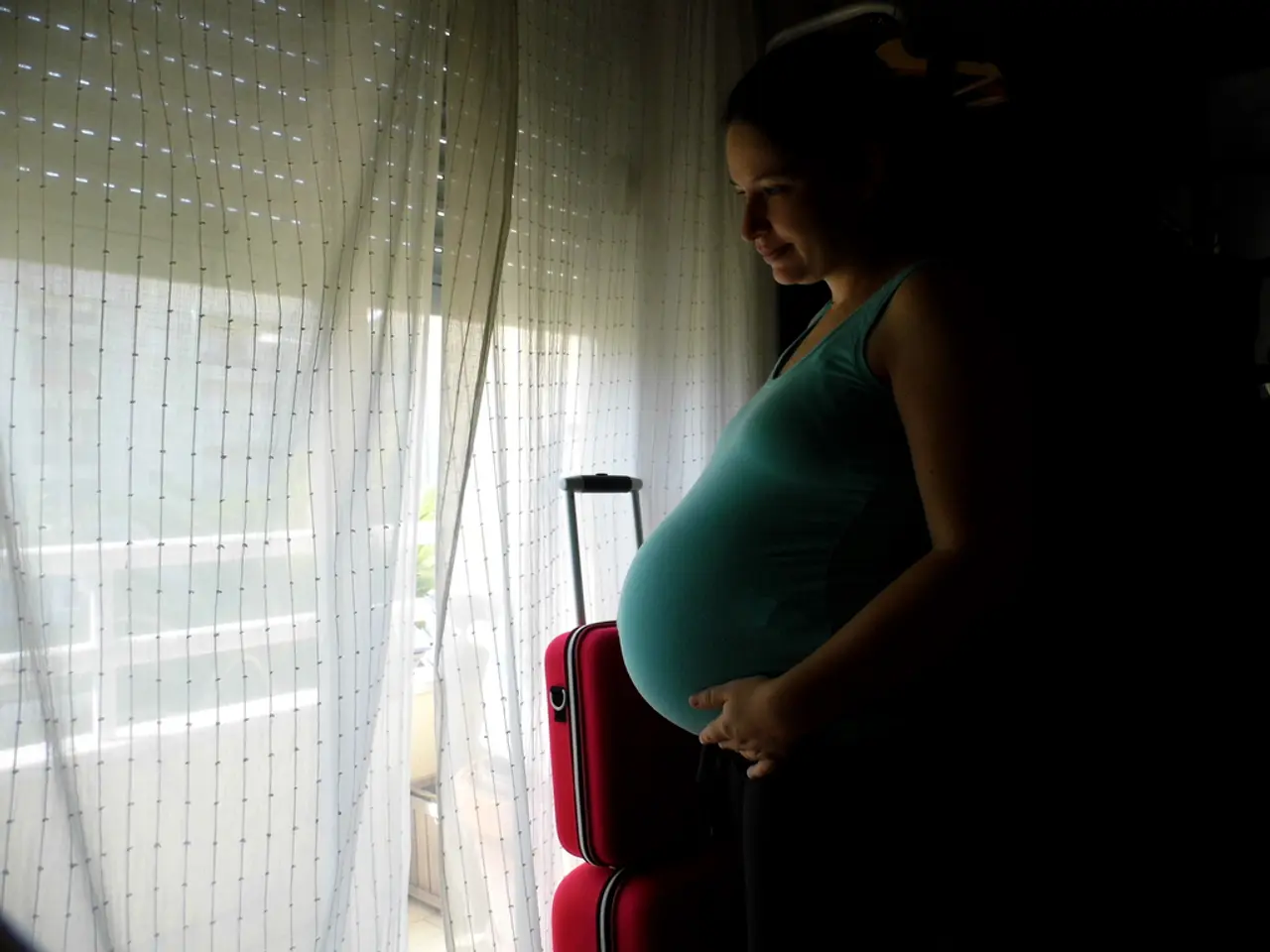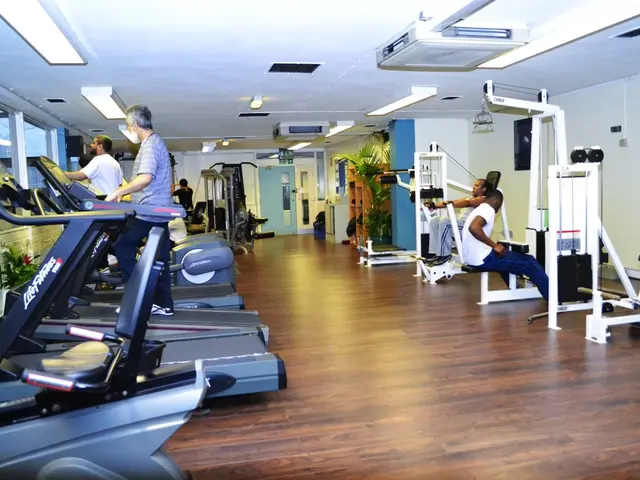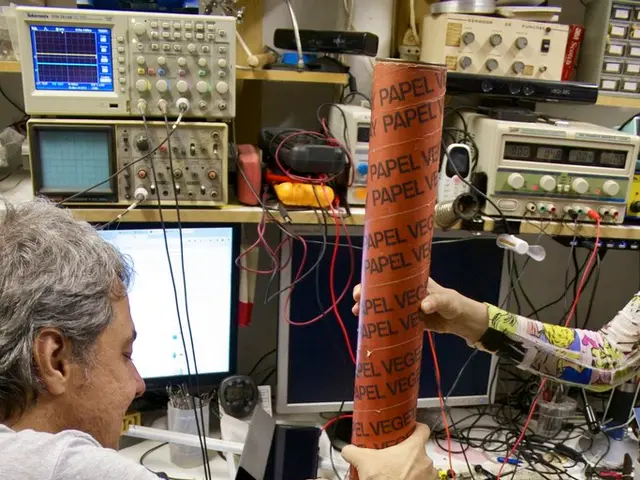Pregnancy Debuts as a Trendy Wardrobe Accessory in the Year...
In the late 18th century, a unique and intriguing fashion trend emerged, one that transformed pregnancy into a style statement. Known as "The Pad," this artificial pregnancy bump was a fashion accessory that women could buy and wear under their dresses, simulating different stages of pregnancy for aesthetic and possibly social signalling purposes.
The Pad, essentially a false pregnancy bump, came in various sizes, ranging from two months to even twins, allowing women to experiment with the appearance of pregnancy without being pregnant themselves. Cartoons from 1793, such as "The Cestina Warehouse or the Belly Piece Shop," depict women shopping for these padded tummy pieces, with salesmen humorously selling the bump pads marked with gestational ages.
This fashion trend diverged from earlier padded fashions that focused on enhancing the backside, popularized by Marie Antoinette's style. Instead, the padding shifted to the front tummy area, simulating pregnancy. The shift brought additional social and symbolic meaning, as pregnancy was not just a biological state but could be expressed and enacted as a visible fashion statement.
Historian Leslie Tuttle describes a "pronatalism" in early modern France, emphasizing marriage, family, and sex positivity. It is possible that the trend for The Pad was a reflection of this pronatalism, as pregnancy was in vogue during this period. The artificial bump allowed any woman to participate in the popular "pregnant look" regardless of their actual condition.
The Pad was also a political gesture that emerged in relation to the French Revolution. After the first French Revolution, women made a great display of their pregnancy, while those who were not pregnant invented a style of dress to give them the reputation of being pregnant. This trend continued until the end of the 18th century, as historians Lisa Forman Cody and others have corroborated.
However, in the 19th century, the trend for The Pad began to decline, and by the 21st century, maternity wear is strictly for pregnancy or pretense. In contrast, maternity fashions in the 21st century exploit the full potential of spandex, belts, and bows to announce the baby bump. Bridal wear can now showcase pregnancies, and pregnant bodies are more commonly celebrated in fashion shoots and celebrity images.
The Pad, a fashion for a false bump, was lambasted in print-shop windows during the Napoleonic War and was eventually replaced by more traditional maternity wear. Yet, its existence serves as a reminder of a unique moment in history when pregnancy was commodified and stylized as an element of dress, highlighting both gender performativity and the fluidity of fashion norms in the late 18th century.
[1] Davis, I. (2007). Conceiving Histories. Routledge.
Science reveals that the false pregnancy bump, known as The Pad, was a popular fashion accessory in the late 18th century, particularly in health-and-wellness and women's health realms. This clothing item, designed to simulate various stages of pregnancy, mirrored the societal emphasis on pronatalism, a term coined by historian Leslie Tuttle to describe the focus on marriage, family, and sex positivity in early modern France. The Pad contributed to the fluidity and performativity of fashion norms, demonstrating how pregnancy could be commodified and stylized as an element of dress.




